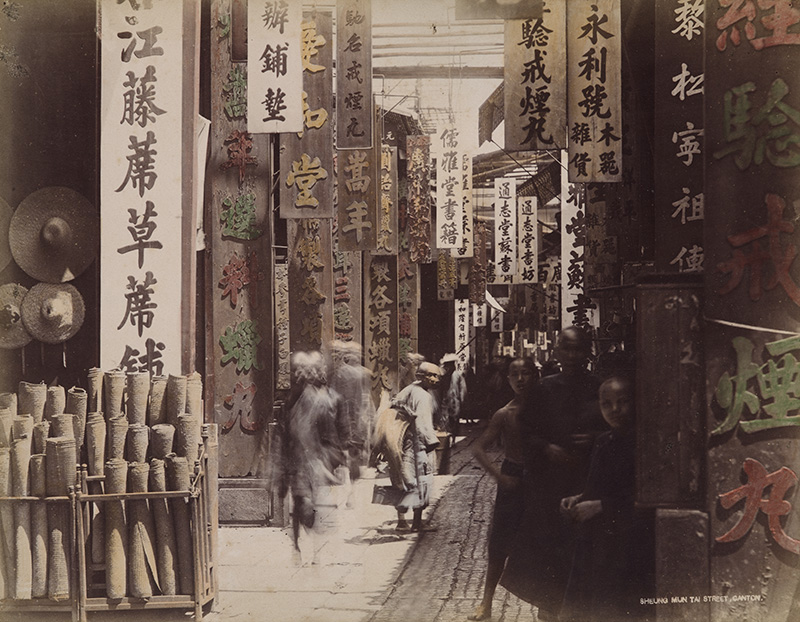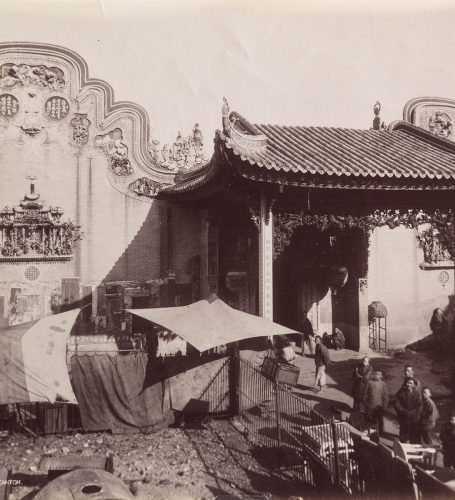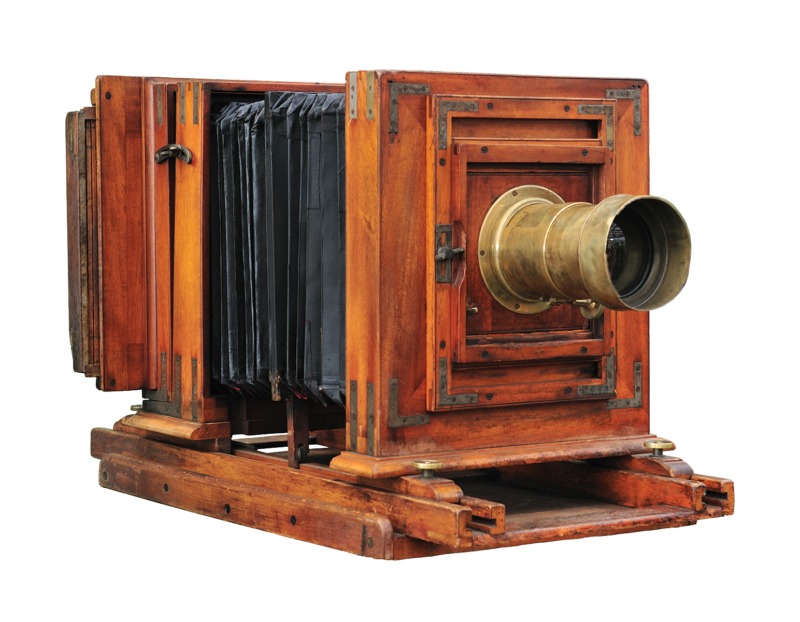

A Chan Studio
1870s
Hand-colored albumen silver print
21 x 29 cm
From the Loewentheil Collection
雅真影相
1870年代
手工上色蛋白印相
21 x 29 厘米
洛文希尔收藏
The Loewentheil Collection includes one of the most comprehensive selections of photographs by A Chan (Ya Zhen) Studio, including fine hand-colored prints such as the view of Sheungmun Tai Street in Guangzhou. The major Chinese photography studio is important for its photographs of Chinese traditions and customs and its images of landmark sites and buildings. A Chan (Ya Zhen) Studio excelled at capturing engaging and expressive photographs of local culture, and the images are unparalleled in their ability to convey life in late Qing dynasty China.
Each individual A Chan (Ya Zhen) Studio photograph tells the story of a moment in the life of a particular place in Guangzhou but together the collection of photographs tells the story of the city itself.

A Chan (Ya Zhen). Temple of Cho Shing, Guangzhou. 1870s.
Additional Early Street Scenes in the Loewentheil Collection

The History of Street Photography in China
Street photography, or jiepai, is a beloved art form in China and around the world. Recent advancements of the camera, and even the mobile phone, have increased possibilities for capturing evocative street scenes, but the phenomenon dates to the late Qing dynasty. More than 150 years ago early photographers experimented with the first photographic processes on some of the most ancient streets in the world. Since photography’s invention, visionary photographers fascinated with urban life and humanity have made works of art out of the social landscape of cities.
Pioneering late Qing dynasty photographers such as A Chan (Ya Zhen) Studio, Lai Fong, Tuck Tai Studio, and many others set the stage for what would unfold in the future of street photography. These innovative early artists influenced generations of photographers.
Exposure times necessary for collodion chemistry challenged artists photographing active streets in China. People or objects in motion blurred or vanished from the image. They often appeared on the resulting plate as optical ghosts. In addition, crowds curious about the camera frequently formed around photographers, further hindering the creation of a spontaneous view of the flourishing urban culture on the streets of China.

For permissions and inquiries please contact:
446 Kent Avenue PH-A Brooklyn, NY 11249 USA